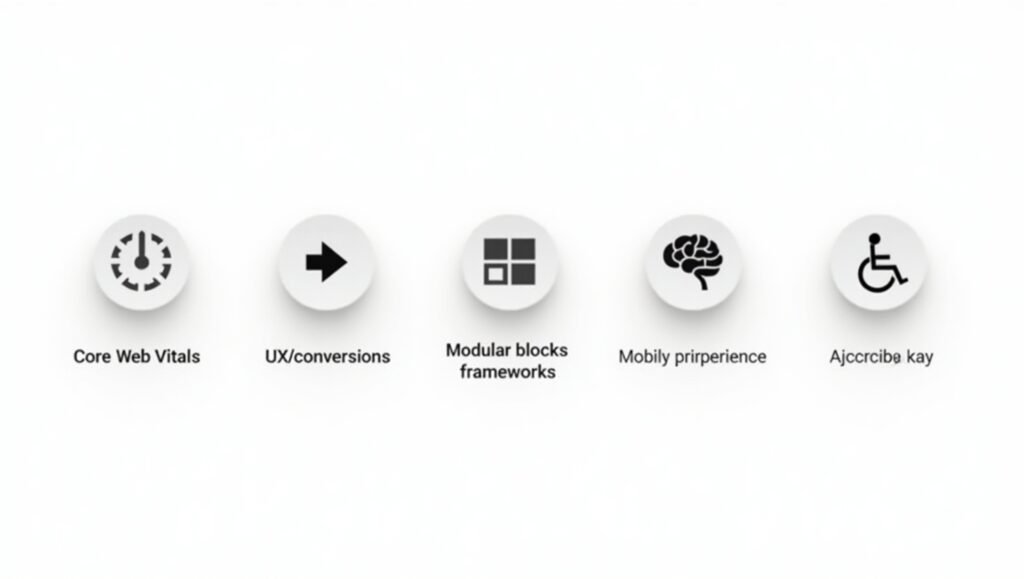In today’s digital-first economy, your website is your strongest salesperson—and in 2025, that’s truer than ever. Whether you’re a small business owner, digital marketer, or scaling enterprise, understanding where web development is headed can give you a serious edge. This guide unpacks the trends, tools, and best practices shaping the next era of high-performing websites, with insights that could save you time, money, and missed opportunities.
Introduction: What Is Website Development in 2025 & Why It Matters
Website development in 2025 is no longer just about clean code or beautiful interfaces. It’s a multifaceted process that integrates performance, SEO, accessibility, AI-driven experiences, and mobile-first design. With Google’s algorithm updates favoring speed, usability, and EEAT (Experience, Expertise, Authority, Trust), your site must perform just as well under the hood as it does on the surface.
Top Benefits of Strategic Website Development in 2025:
- Improved Core Web Vitals = Better Rankings
- Enhanced UX = Higher Conversions
- Scalable, modular frameworks = Faster Development
- Future-proofing through AI and accessibility compliance
- Competitive advantage in your industry niche

2025 Web Development Trends to Watch
1. Mobile-First and Responsive Design Are Non-Negotiable
Google now indexes mobile-first by default—meaning if your mobile site is subpar, your rankings suffer.
Key Concepts:
- Fluid grids & media queries
- Viewport-based typography
- Touch-optimized buttons
- Mobile-first CSS frameworks (Tailwind CSS, Bootstrap 5+)
LSI Terms: mobile UX, screen responsiveness, fluid design, adaptive interfaces, breakpoints
Example: A landscaping company we worked with reduced mobile bounce rates by 43% after implementing mobile-first redesign with lazy-loaded hero images and touch-friendly navigation.
2. Headless CMS & Jamstack Architecture
Headless development separates your backend from your frontend, providing faster load times and flexible content delivery via APIs.
Key Benefits:
- Ultra-fast performance via CDN deployment
- Omnichannel publishing (e.g., mobile apps, smart displays)
- Scalability with less overhead
Popular Headless Tools in 2025:
- Strapi
- Sanity.io
- WordPress with WPGraphQL
- Gatsby, Next.js
LSI Terms: decoupled CMS, frontend frameworks, static site generators, GraphQL APIs, content delivery

3. Core Web Vitals Are Still King
Google’s focus on Largest Contentful Paint (LCP), First Input Delay (FID), and Cumulative Layout Shift (CLS) remains crucial.
How to Improve Core Web Vitals:
- Serve WebP/AVIF images
- Lazy-load below-the-fold content
- Use efficient caching & compression (GZIP, Brotli)
- Minimize main-thread work
External Source: Google’s Web.dev on Core Web Vitals
4. AI & Automation in Development
From AI-assisted coding (GitHub Copilot) to AI-powered UX personalization, machine learning is revolutionizing development workflows.
Where AI Fits in 2025 Web Projects:
- Content personalization
- Chatbot integrations
- SEO audits & auto-suggestions
- A/B testing variations via generative AI
Case Study: A SaaS client integrated ChatGPT-powered support across their website, reducing support tickets by 38% while improving customer satisfaction by 52%.
LSI Terms: AI coding assistants, machine learning UI, predictive UX, chatbot integration, GPT-driven websites
5. Accessibility & WCAG 2.2 Compliance
Accessible websites aren’t just inclusive—they’re legally necessary and SEO-friendly.
Key Considerations:
- ARIA roles and semantic HTML
- Color contrast and font readability
- Keyboard navigation
- Screen reader testing tools (NVDA, VoiceOver)
Tools: Axe, Lighthouse, Wave
External Source: W3C WCAG Standards
How to Develop a Future-Proof Website in 2025
Step 1: Define Clear Goals & KPIs
Align website functionality with business goals—e.g., lead generation, ecommerce sales, brand trust.
LSI Terms: goal-driven development, conversion optimization, lead funnel, business alignment, CRO
Step 2: Choose the Right Stack & CMS
WordPress remains dominant, but combine it with:
- Gutenberg + custom blocks
- WPGraphQL for headless
- Advanced Custom Fields (ACF)
LSI Terms: WordPress 6.5+, CMS flexibility, block editor, custom post types, WP REST API
Step 3: Optimize for SEO & Speed from Day 1
Don’t wait to “add SEO later.” Bake it into every decision:
- Semantic headings
- Fast hosting (LiteSpeed, Cloudflare CDN)
- Schema markup
- On-page keyword optimization
Internal Link Placeholder: [Link to related blog on WordPress SEO best practices]
Step 4: Run Lighthouse & Accessibility Audits
Google Lighthouse gives scores for:
- Performance
- Accessibility
- Best Practices
- SEO
- Progressive Web App (PWA) compliance
Recommended Checklist:
- Pass all audits with ≥90 scores
- Run on mobile & desktop
- Automate via GitHub Actions or CI/CD pipelines
Conclusion & Next Steps
2025 is reshaping how we build and optimize websites—from AI to accessibility and lightning-fast performance. If your website isn’t mobile-first, optimized for Core Web Vitals, and using modern stacks, it’s time for a serious upgrade. A strategic site isn’t just a marketing asset—it’s your growth engine.
✅ CTA Block
Book a free WordPress site audit today
Let’s uncover performance bottlenecks, missed SEO opportunities, and UX wins.
👉 Schedule your free audit

